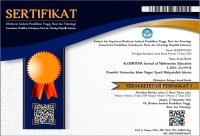The Effect of Snowball Throwing Learning Model on Student Learning Outcomes in Civic Education Subjects Class IV Elementary School
Abstract
The purpose of this study was to determine the influence of the snowball throwing learning model on student learning outcomes in the civics class IV at Elementary School. The method that the researchers used was a quasi-experimental method with the design of the nonequivalent control group design. The data collection technique in this study used observation, interviews and tests, the test used was an enrichment sheet. With the data analysis techniques used in this study are validity test, reliability test, difficulty level test, question differentiator test, normality test, homogeneity test, and hypothesis test. Based on the hypothesis test in this study using the independent sample t test or what is known as the unpaired t test using post test data, namely the Sig. (2-tailed) value of 0.000 < 0.05, it can be interpreted that the Independent Sample T-Test can be said that the H0 is rejected, which means that there is an influence of the snowball throwing learning model on student learning outcomes in the subject of Ppkn grade IV at Elementary School.
Keywords
Full Text:
PDFReferences
Adiputra, I Made Sudarman. Et al. (2021). Health Statistics: Theory and Applications. Medan: Yayasan Kita Tulis.
Ismail, Fajri. (2018). Statistics for Educational Research and the Social Sciences. Jakarta: Kencana.
Kosilah and Septian. (2020). Application of The Assure Type Cooperative Learning Model in Improving Student Learning Outcomes. Baubau: Journal of Research Innovation. Vol 1 No 6.
Mursid, Kiki Barkiah, et al. (2021). The Effect of Snowball Throwing Type Cooperative Learning Model on Sisiwa Learning Outcomes at MI Al Mursyid. Bogor: Edunovation Vol 1. No. 1.
Navian Simarmata, Nada. (2018). Efforts to Improve Student Learning Outcomes by Using snowball throwing learning models. Salatiga : Scientific Journal of Education and Learning, Vol 2. No. 1
Norfai. (2019). Non-Parametric Statistics for Health. Klaten, Lakeisha.
P. I Putu Ade A. and I Gusti Angung N. T.J. (2018). Experimental Research Guide along with Statistical Analysis with SPSS. Yogyakarta: Deepublish.
Prima Dedti, Rizka and Reinita. (2021). Improving Student Learning Outcomes in Integrated Thematic Learning Using a Snowball Throwing Type Cooperative Model in Grade IV SDN 08 Gantiang Padang Panjang City. Padang : Tambuusai Education. Vol 5. No. 2
Rofin, Eddy. (2021). Populations, Samples, Variables in Medical Research. Central Java : PT Nasya Expanding Management.
Satyaninrum, Ika Rahayu Satyaninrum. (2022). Research Methodology. Makasar: Scholar Publisher.
Sinaga, Enny Kristiana et al. (2019). Statistical Theory and Educational Applications. Medan: Yayasan Kita Tulis.
Subagyo, Agus. (2022). Enikki Media in Social Studies Learning. Yogyakarta: Jejak Pustaka.
Shafaruddin. Et al. (2019). Teachers Let's Write Classroom Action Research (PTK). Sleman: Deepublish Publisher.
Syifauzakia, et al, (2021). Basics of Early Childhood Education. Malang: Nusantara Literacy.
Umami, Afriza Umami. (2021). Basic Concepts of Biostics. Kediri: CV Pelita Medika.
Joseph, Muhammad and Lukman Daris. (2019). Research Data Analysis: Application Theory in the Field of Engineering. Bogor: PT Publisher IPB Press.
DOI: https://doi.org/10.15408/elementar.v2i2.28039
Refbacks
- There are currently no refbacks.

This work is licensed under a Creative Commons Attribution 4.0 International License.

This work is licensed under a Creative Commons Attribution 4.0 International License.
Copyright © 2021, Eelementar: Jurnal Pendidikan Dasar, p-ISSN: 2807-226X, e-ISSN: 2807-2006
Indexed By:


